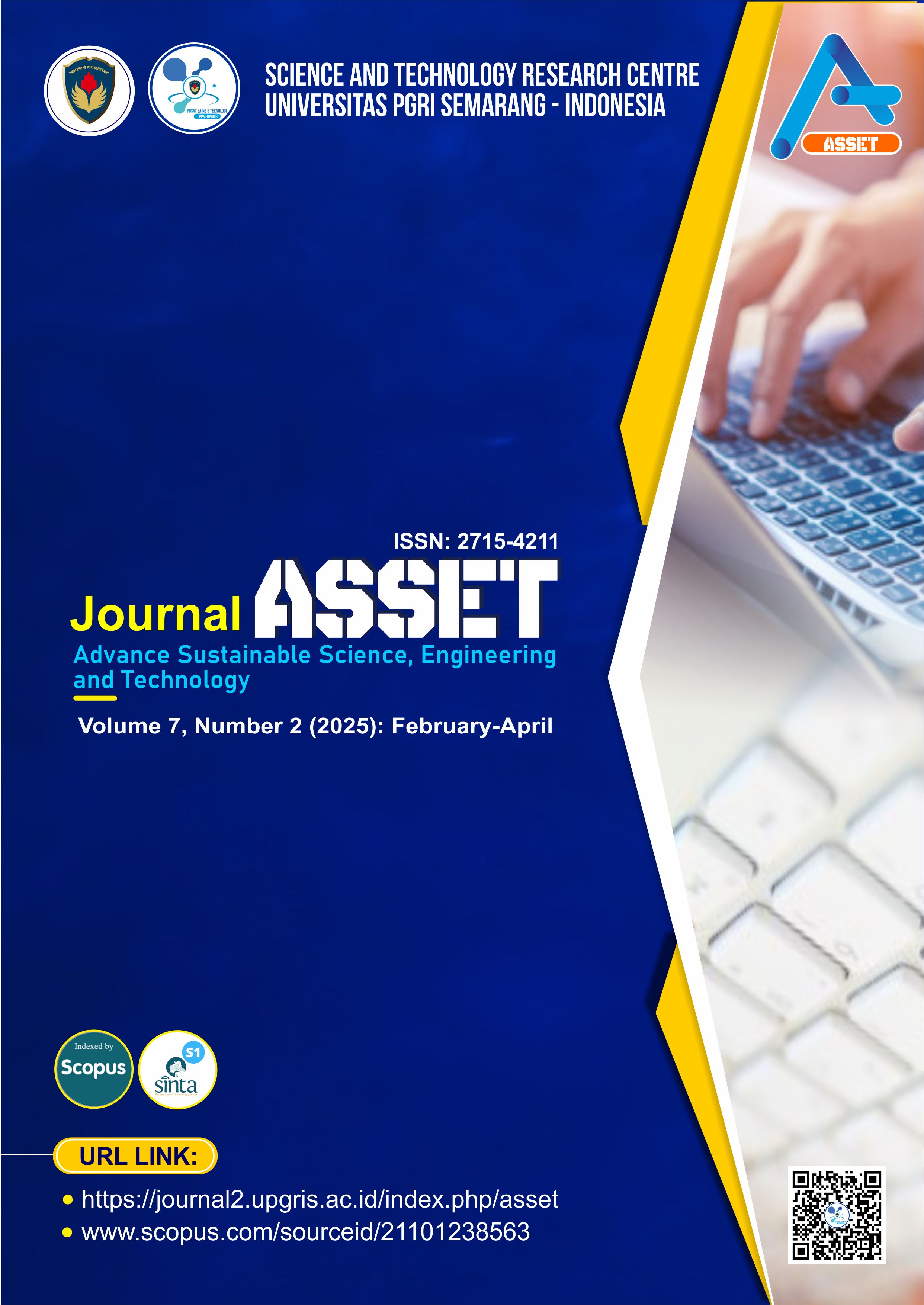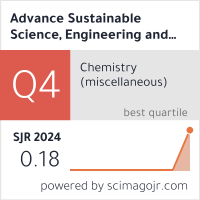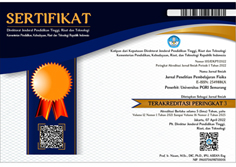Prokes rematri Web-based App: Development, Testing and Construct Validation of Content to Control Undernutrition at Female Teenager as Early Prevent Stunting in Life Cycle
DOI:
https://doi.org/10.26877/srxr3p50Keywords:
web-based, application, nutrition, female teenager, stuntingAbstract
Several measurements of female teenager undernutrition risk factors have been carried out, but the data are limited and not collected well. Technology approach needed to solve at this problem. This research was conducted to develop Prokes rematri web-based app and analysis CFA and EFA as construct validity. The variables and items as content of beta version were obtained from literature reviews and in-depth interviews who stake holder stunting program as subjects. In this study we limit the science scope about public health, nutrition, and statistic. Data analysis using explanatory factor analysis (EFA) and confirmatory factor analysis (CFA). In conclusion, we had developed Prokes Rematri We-Based app and have blackbox tested. In the other hand, 40 items question as end result of construct validated by EFA and CFA. The scope of questionnaire consist of four topics, that are youth nutrition practice, community support, youth nutrition knowledge, and internal factor of youth nutrition.
References
[1] WHO and Weis, “WHO Global nutrition targets 2025: stunting policy brief. WHO. https://who.int/nutrition/publications/globaltargets2025_policybrief_stunting/en/,” 2014.
[2] S. Helmyati et al., “Monitoring continuity of maternal and child health services, Indonesia,” Bull. World Health Organ., vol. 100, no. 2, pp. 144-154A, 2022, doi: 10.2471/BLT.21.286636.
[3] T. N. P. P. Kemiskinan, “Strategi Nasional Percepatan Pencegahan Stunting 2018-2024 (National Strategy for Accelerating Stunting Prevention 2018-2024),” Tim Nas. Percepatan Penanggulangan Kemiskin. Sekr. Wakil Pres. Republik Indones., no. November, pp. 1–32, 2018, [Online]. Available: http://tnp2k.go.id/filemanager/files/Rakornis 2018/Sesi 1_01_RakorStuntingTNP2K_Stranas_22Nov2018.pdf
[4] Kemenkes, “Hasil Survei Status Gizi Indonesia (SSGI) 2022,” pp. 1–7, 2023.
[5] Kementerian Kesehatan RI Badan Penelitian dan Pengembangan, “Hasil Utama Riset Kesehatan Dasar,” Kementrian Kesehat. Republik Indones., pp. 1–100, 2018, [Online]. Available: http://www.depkes.go.id/resources/download/info-terkini/hasil-riskesdas-2018.pdf
[6] WHO, Reducing stunting in children: equity considerations for achieving the Global Nutrition Targets 2025. 2018. [Online]. Available: https://www.who.int/publications/i/item/9789241513647%0AAccessed on 18th February 2022
[7] V. A. V. Setyawati, “Kajian Stunting Berdasarkan Umur dan Jenis Kelamin Di Kota Semarang,” 7th Univ. Res. Colloqium 2018, pp. 834–838, 2018, [Online]. Available: http://repository.urecol.org/index.php/proceeding/article/view/273
[8] V. A. V. Setyawati and A. Kurniadi, Stunting, Malnutrisi, Edukasi Gizi Remaja Masa Kini. Yogyakarta: Dee Publishing, 2021.
[9] W. Slemming, J. Kagura, H. Saloojee, and L. M. Richter, “Early life risk exposure and stunting in urban South African 2-year old children.,” J. Dev. Orig. Health Dis., vol. 8, no. 3, pp. 301–310, Jun. 2017, doi: 10.1017/S2040174417000034.
[10] Kementerian PPN/ Bappenas, “Pedoman Pelaksanaan Intervensi Penurunan Stunting Terintegrasi di Kabupaten/Kota,” Rencana Aksi Nas. dalam Rangka Penurunan Stunting Rembuk Stunting, no. November, pp. 1–51, 2018, [Online]. Available: https://www.bappenas.go.id
[11] Pritasari, D. Damayanti, and N. T. Lestari, Bahan Ajar Gizi Dalam Daur Kehidupan. Kementerian Kesehatan RI, 2017.
[12] V. A. Setyawati, D. K. Hidayat, H. S. Andika, A. N. Pradani, E. Rimawati, and S. Isworo, “The role of family’s socio-economic status at stunting adolescences food intake in second growth spurt,” GSC Biol. Pharm. Sci., vol. 5, no. 2, pp. 048–052, 2018, doi: 10.30574/gscbps.2018.5.2.0113.
[13] E. W. Vilda Ana Veria Setyawati, Ari Yuniastuti,Oktia Woro Kasmini Handayani, Eko Farida, “Faktor Risiko Kekurangan Energi Kronik pada Remaja Putri di Kota Semarang,” Semarang: Pascasarjana Universitas Negeri Semarang, 2023, pp. 875–882. [Online]. Available: https://proceeding.unnes.ac.id/index.php/snpasca/article/view/2233
[14] V. M. Oddo, A. Roshita, and J. H. Rah, “Potential interventions targeting adolescent nutrition in Indonesia: a literature review.,” Public Health Nutr., vol. 22, no. 1, pp. 15–27, Jan. 2019, doi: 10.1017/S1368980018002215.
[15] Ö. Mengi Çelik, M. S. Karacil Ermumcu, and C. Ozyildirim, “Turkish version of the ‘food and nutrition literacy questionnaire for Chinese school-age children’ for school-age adolescents: a validity and reliability study.,” BMC Public Health, vol. 23, no. 1, p. 1807, Sep. 2023, doi: 10.1186/s12889-023-16732-2.
[16] T. Liu, X. Su, N. Li, J. Sun, G. Ma, and W. Zhu, “Development and validation of a food and nutrition literacy questionnaire for Chinese school-age children.,” PLoS One, vol. 16, no. 1, p. e0244197, 2021, doi: 10.1371/journal.pone.0244197.
[17] N. W. Stjernqvist, P. Elsborg, C. K. Ljungmann, J. Benn, and A. H. Bonde, “Development and validation of a food literacy instrument for school children in a Danish context.,” Appetite, vol. 156, p. 104848, Jan. 2021, doi: 10.1016/j.appet.2020.104848.
[18] M. Ashoori, N. Omidvar, H. Eini-Zinab, E. Shakibazadeh, and A. Doustmohamadian, “Development and Validation of Food and Nutrition Literacy Assessment Tool for Iranian High-school Graduates and Youth.,” Int. J. Prev. Med., vol. 11, p. 185, 2020, doi: 10.4103/ijpvm.IJPVM_466_19.
[19] H. Kusumo, D. Marlina, and A. Solechan, “Sustainable Digital Transformation in Healthcare : Challenges and Directions in the Society 5 . 0 Era,” vol. 7, no. 1, 2025.
[20] U. Zwierczyk, M. Kobryn, and M. Duplaga, “Validation of the Short Food Literacy Questionnaire in the Representative Sample of Polish Internet Users,” Int. J. Environ. Res. Public Health, vol. 19, no. 15, 2022, doi: 10.3390/ijerph19159710.
[21] D. Budiastuti and A. Bandur, Validitas dan Reliabilitas Penelitian. 2018. [Online]. Available: www.mitrawacanamedia.com
[22] L. de C. Lopes Neri et al., “Factor Analysis of the Brazilian Questionnaire on Adherence to Ketogenic Dietary Therapy: Keto-Check,” Nutrients, vol. 15, no. 17, pp. 1–13, 2023, doi: 10.3390/nu15173673.
[23] P. Christian and E. R. Smith, “Adolescent Undernutrition: Global Burden, Physiology, and Nutritional Risks.,” Ann. Nutr. Metab., vol. 72, no. 4, pp. 316–328, 2018, doi: 10.1159/000488865.
[24] V. A. V. ; A. K. Setyawati, “Giziku Baik App: Preventing Stunting and Nutritional Status Self Record in An Adolescent Period,” Semarang: Universitas Dian Nuswantoro, 2022, pp. 1–23.
[25] E. Charoghchian Khorasani, S. B. Tavakoly Sany, A. Orooji, G. Ferns, and N. Peyman, “Health Literacy in Iranian Women: A Systematic Review and Meta-Analysis.,” Iran. J. Public Health, vol. 49, no. 5, pp. 860–874, May 2020.
[26] M. Banayejeddi et al., “Implementation evaluation of an iron supplementation programme in high-school students: The crosswise model,” Public Health Nutr., vol. 22, no. 14, pp. 2635–2642, 2019, doi: 10.1017/S1368980019001575.
[27] Mitra, “Adolescent Knowledge of Anemia and Iron Supplement Consumption Before and After Health Education,” Int. J. Sci. Soc., vol. 2, no. 4 SE-Articles, Aug. 2020, doi: 10.54783/ijsoc.v2i4.187.











